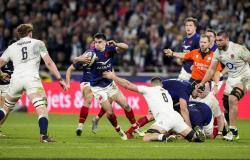With an increase of 77% in 24 hours, the PEPE memecoin managed to climb into the top 20 cryptocurrencies. What triggered this euphoria?
The PEPE price soars
Launched more than a year and a half ago now, the PEPE first knew how to get people talking about it after an initial wave of popularity caused transaction fees on Ethereum (ETH) to explode in the spring of 2023. Since then, the asset has continued to gain ground, amid growing interest in memecoins by some investors .
Today, the famous frog reached a new milestone, recording an increase of 77% in just 24 hours, propelling its growth over 7 days to 123%:
PEPE price in daily data
???? Would you like to know more about PEPE? Read our guide
Thanks to this increase, PEPE has now been introduced into the top 20 of the largest crypto capitalizationsi.e. 18th place for the moment. Regarding its own capitalization, this briefly exceeded $10 billion and now represents $9.54 billion.
Among the reasons that could explain such an increase, we must mainly turn to cryptocurrency exchanges. Indeed, the token managed to obtain a listing not only on Robinhood, but also on Coinbase, and both were announced on Wednesday:
???? Also in the news — The S&P 500 of cryptocurrencies: Coinbase launches the COIN50 index to bet on the biggest cryptos
In terms of liquidations, Coinglass data reports an even split between long and short positions over 24 hours, with $16.37 million on one side and $17 million on the other.
If trading memecoins can be profitable, let us also remember that the latter face increased volatility compared to other cryptocurrenciesthus increasing the risks and therefore calling for greater caution.
Coinbase: register on the most famous crypto exchange in the world
La Newsletter crypto n°1 ????
Receive a summary of crypto news every day by email ????
What you need to know about affiliate links. This page may feature investment-related assets, products or services. Some links in this article may be affiliated. This means that if you buy a product or register on a site from this article, our partner pays us a commission. This allows us to continue to offer you original and useful content. There is no harm to you and you can even get a bonus using our links.
Investments in cryptocurrencies are risky. Cryptoast is not responsible for the quality of the products or services presented on this page and cannot be held responsible, directly or indirectly, for any damage or loss caused following the use of a good or service highlighted in this article. Investments related to cryptoassets are risky by nature, readers should do their own research before taking any action and only invest within the limits of their financial capabilities. This article does not constitute investment advice.
AMF recommendations. There is no guaranteed high return, a product with high return potential involves high risk. This risk-taking must be in line with your project, your investment horizon and your capacity to lose part of this savings. Do not invest if you are not prepared to lose all or part of your capital.
To go further, read our Financial Situation, Media Transparency and Legal Notices pages.
Since 2021, I have devoted my free time to seriously educating myself on cryptocurrencies in order to acquire maximum knowledge and credibility. I often have the opportunity to conduct interviews with influential figures in the blockchain industry. I also conduct in-depth analyzes on Web3 themes to offer exclusive content to Cryptoast readers.
Vincent Maire
1441 articles







